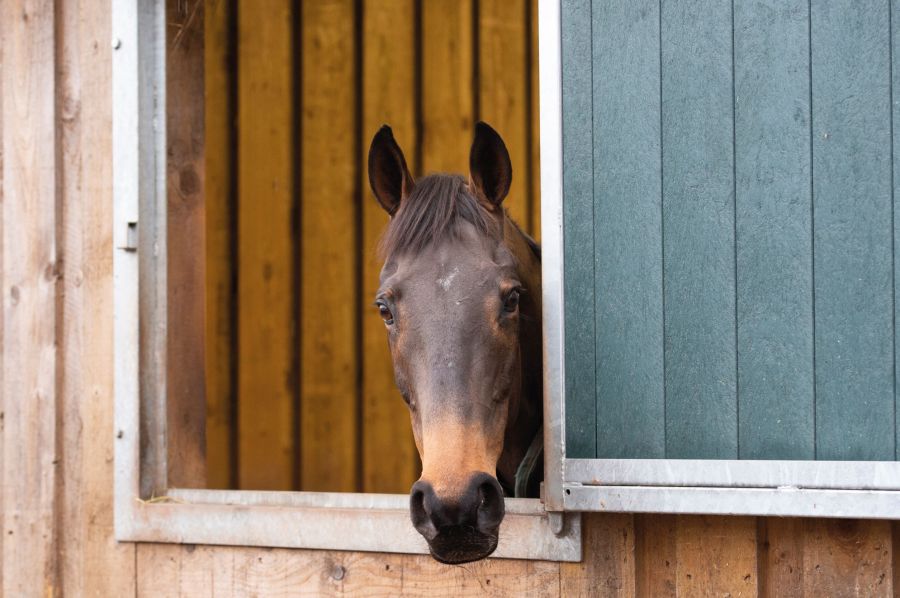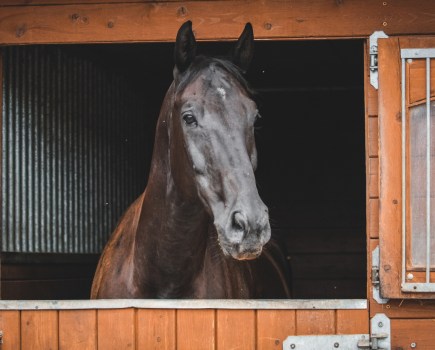Do you have a plan in place for yourself and your horse should disaster strike?
In the last few years we’ve experienced a range of extreme weathers, from heat waves and wildfires in the summer to flooding and snow storms in the winter. You still have to care for your horse – but what should you do if there’s an emergency and their safety is potentially at risk? Should you try to evacuate, or what if that’s not an option?
The first thing to do is to conduct a full assessment and put a plan in place. It might seem overly dramatic, but knowing what you’ll do and where everything is in the event of an emergency will help you cope should the worst happen.
This advice from UC Davis will help you prepare for disaster.
1. Be able to identify your horse
It’s important to be able to identify your horse should you lose them. By law all horses must be microchipped, but you need to ensure you keep their passport to hand or copies of it with important details like their microchip number.
It’s also a good idea to have photos of your horse on your phone or even printed out and kept in their passport – make sure you have full body shots as well as close ups of their face and any useful identifying markings.
2. Have headcollars and ropes ready to go
Keep headcollars, bridles and ropes easily accessible and nearby your horse. Consider keeping a spare headcollar and rope in your trailer or with your emergency bag just in case.
It could also be a good idea to attach a luggage tag with your details – name, address, phone number and email – to the headcollar just in case.
3. Keep medical records on hand
It might not seem like a priority, but keeping copies of your horse’s veterinary history, as well as any other medical information such as medications and dosage, is important should anything happen.
If your horse has any important medication they require, keep a small stock of it at home or with your emergency kit to keep you covered in case you can’t access more for a few days. Ensure that you check the expiry date every couple of months and replace it as necessary.
4. Get them loading and unloading
In an emergency you may have to load your horse to transport them, and that could be a highly stressful situation with very little time to spend coaxing your horse onto your lorry or trailer. If they refuse to load, you may run out of time and have to leave them behind.
The best thing to do is practise – get them confident and comfortable loading and once you’ve done this, move onto emergency drills once or twice a year.
Loading in a stressful environment will only exacerbate any issues, so try to iron this out through training first.
5. Have transportation plans in place
If you have your own transport, keep it road ready by making regular checks and staying up to date with services. You’ll also want to keep your lorry or towing vehicle with at least half a tank of fuel so you don’t have to worry about rushing to a petrol station to fill up.
If you don’t own your own transport, put a plan in place. Could you share with someone else on your yard? Do you have any friends locally who could help?
6. Plan where you are going to go
This isn’t a decision you’ll want to make on the day in a panic, so consider your options. Depending on what you’re evacuating from, you may want to travel to another yard, field or other option.
Make sure you have your exit routes mapped out, with at least two options, just in case there are problems with one.
7. Have a back-up plan ready
What will you do if you can’t move your horse? You’ll need to consider each disaster and plan accordingly.
If there is flooding, where is the highest point, and is it accessible? You don’t want to leave them in their stable with limited feed if this could flood, leaving you unable to return for days.
If there is a wildfire, you’ll want to put your horse somewhere with a defensible area around it to limit the chance of the fire jumping – so in this situation, if there’s nothing flammable around it, their stable may be best.
8. Share your plans
Once you’ve got your plan in place, make copies and share them out. It’s worth giving them to your neighbours, friends and other local horse owners.
Keep copies on the yard, in the tack room, and in your emergency kit for easy access.
9. Don’t leave it too late
It’s best to evacuate sooner rather than later, or you could put your horse and yourself at risk.
10. Have supplies ready
Ensure you have plenty of supplies. Ideally, you should have 72 hours worth of fresh water, hay and feed ready to go. You should also have a portable first aid kit, spare headcollar and lead rope, buckets, twine and scissors.
For more information on disaster preparedness and to see the full advice from UC Davis, visit their website here.
Check out our subscription offer









